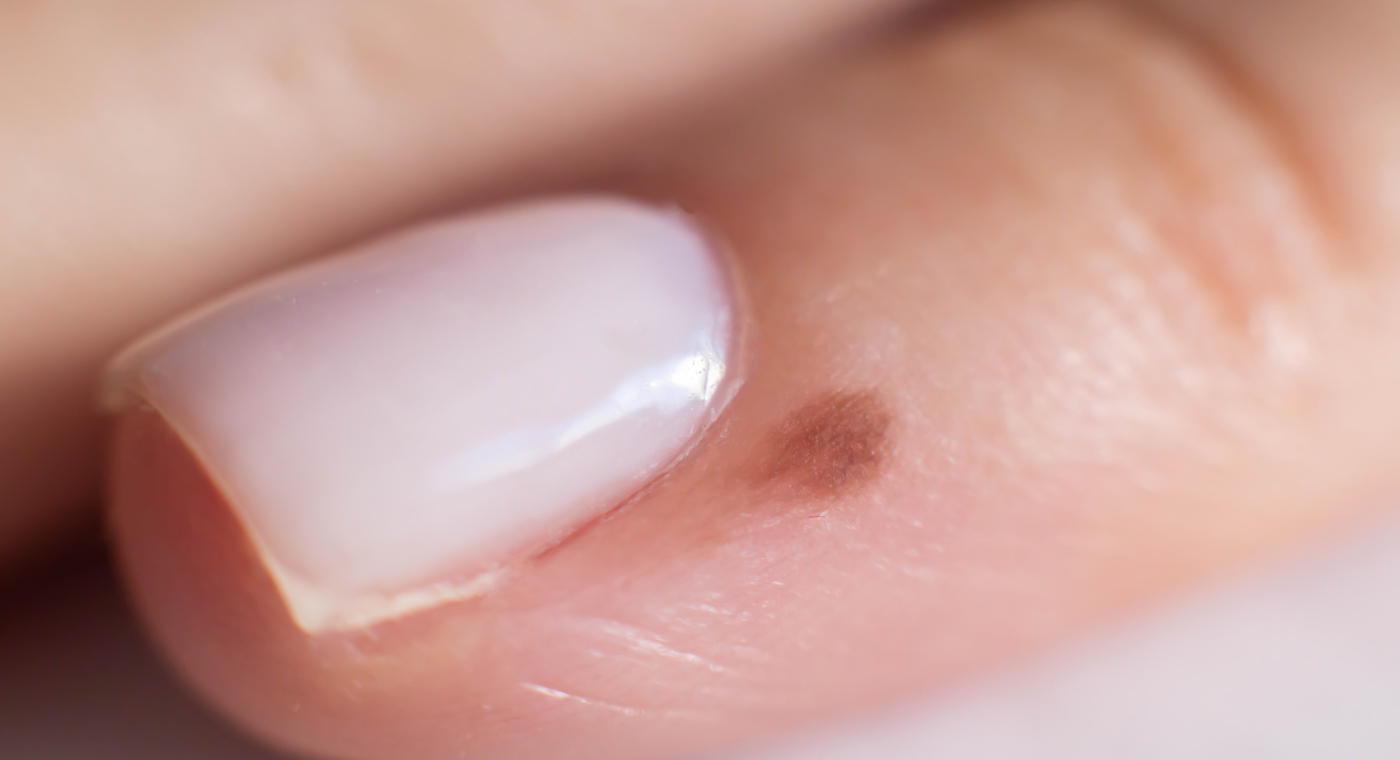Blog
Full-Mouth Dental Implants: The Ultimate Guide to Restoring Your Smile

Modern dental technology offers life-changing solutions for people who have lost most or all of their teeth. Full-mouth dental implants have gained popularity due to their ability to restore functionality, appearance, and confidence. This solution provides a permanent, comfortable, and natural-looking alternative to dentures. If you’re considering full-mouth dental implants, this comprehensive guide covers everything you need to know.
What Are Full-Mouth Dental Implants?
Full-mouth dental implants involve placing multiple dental implants into the jawbone to support a full set of upper and lower teeth. Unlike traditional dentures, these implants are securely fixed in place, providing greater stability and comfort. Dental implants serve as a permanent foundation for replacement teeth. The titanium screws used integrate with the bone, making them as strong as natural roots. A full set of teeth supported by implants provides a natural bite, speech, and smile.
Who Should Consider Full-Mouth Dental Implants?
Full-mouth dental implants are ideal for people who have lost most of their teeth due to trauma, decay, or gum disease. They can also help people who are dissatisfied with dentures or bridges. Anyone with healthy gums and enough jawbone to support the implants could be an excellent candidate. A consultation with a dentist will determine if implants are right for you, but those who maintain good oral health and don’t smoke are likely to qualify.
The Benefits
There are several advantages to choosing full-mouth dental implants over traditional dentures. The benefits include better stability, longevity, and natural appearance. For instance, full-mouth implants do not slip while speaking or eating, which often happens with dentures. This provides immense confidence to the wearer, making everyday tasks more manageable. Moreover, dental implants are more durable and can last for decades with proper care. Importantly, they preserve jawbone health, which deteriorates when natural teeth are missing. Because the implants stimulate bone growth, they prevent bone loss, which typically occurs with tooth loss.
Full-Mouth Dental Implants vs. Dentures
Dentures have long been the go-to solution for tooth loss, but they come with several downsides. Unlike full-mouth dental implants, dentures rest on the gums and can shift during meals or speech. Dentures often need adhesives for stability and can cause discomfort or even sores. Additionally, dentures do not prevent bone loss, leading to changes in the facial structure over time. On the other hand, full-mouth dental implants are securely anchored, making them more reliable. Implants also help maintain jawbone density, so your facial structure remains intact. It closely resemble natural teeth, providing a more aesthetically pleasing and functional solution.
How Do it Work?
The process of getting involves in several stages, from consultation to final restoration. First, your dentist will conduct a comprehensive examination, including X-rays and 3D imaging. These scans help assess your jawbone density and identify the best spots for implant placement. After the evaluation, a personalized treatment plan will be created. If your jawbone requires reinforcement, a bone graft may be needed before implant placement. Once your mouth is ready, the dentist places titanium implants into your jawbone. The bone then grows around the implants in a process called osseointegration. This can take several months, but once complete, the implants are fully integrated and provide a strong foundation. Finally, custom-made prosthetic teeth are attached, completing your new smile.
What to Expect During the Procedure
The process of receiving full-mouth dental implants typically involves two or more surgical procedures. During the first procedure, the dentist places the implants in the jawbone. This process usually requires local anesthesia, but sedation options are available for patients with dental anxiety. After the implants are placed, the healing period begins. Over the next three to six months, your jawbone will fuse with the implants, creating a solid base for your new teeth. During this time, a temporary set of teeth may be used. After the healing phase, the dentist attaches abutments to the implants. These small connectors help secure the final prosthetic teeth in place.
Recovery and Aftercare
Recovery from full-mouth dental implants takes time and requires proper care to ensure long-term success. After the surgery, you may experience swelling, bruising, or minor bleeding, but these symptoms will subside within a few days. Over-the-counter pain medication can help manage discomfort. Maintaining a soft-food diet during the initial healing period prevents putting too much strain on the implants. Foods such as soup, yogurt, and mashed potatoes are excellent options. Most importantly, keeping the implants and surrounding areas clean is essential. Proper oral hygiene will promote healing and prevent infection. After the implants fully integrate with the bone, regular dental checkups will ensure your implants remain in excellent condition.
Cost of Procedure
The cost of full-mouth dental implants varies widely depending on several factors, including location, the dentist’s expertise, and any necessary preparatory treatments. On average, the procedure can range from $25,000 to $50,000 per arch (upper or lower teeth). While this is a significant investment, it’s important to consider the long-term value. Full-mouth dental implants provide a permanent solution compared to dentures, which often need frequent adjustments and replacements. Additionally, many dental offices offer financing plans to make the process more affordable. In some cases, insurance may cover a portion of the cost, particularly if the implants are medically necessary.
How Long it Last?
With proper care, full-mouth dental implants can last a lifetime. The titanium screws that hold the implants in place are incredibly durable and designed to withstand the forces of chewing and biting. Regular dental visits and good oral hygiene habits, including brushing and flossing, will help prolong the life of your implants. Also, avoiding hard or sticky foods can prevent unnecessary strain on the prosthetic teeth.
Are Full-Mouth Dental Implants Painful?
Many people worry about pain during and after the dental implant procedure, but modern techniques have made the process relatively comfortable. Most patients report feeling pressure rather than pain during the surgery, as local anesthesia numbs the area. After the surgery, some discomfort is normal, but over-the-counter medications usually relieve any pain. Your dentist will provide detailed aftercare instructions to ensure a smooth recovery. In rare cases, complications such as infection can occur, but following your dentist’s recommendations minimizes this risk.
Full-Mouth Dental Implants and Bone Grafts
A bone graft helps build up the jawbone to provide a strong foundation for the implants. This is especially common for patients who have experienced bone loss due to missing teeth or gum disease. The bone graft material can come from your own body or be a synthetic substitute. Once the graft has healed, your jaw will be strong enough to support the implants. While this adds time to the overall process, it ensures the long-term success of your dental implants.
Is the Procedure Safe?
Yes, It is considered a safe and effective procedure. Dental implants have been used for decades with a high success rate, typically around 95%. However, as with any surgical procedure, there are potential risks. These can include infection, nerve damage, or implant failure. Working with an experienced dentist who specializes in implant procedures reduces the risk of complications. Additionally, following pre-surgical and post-surgical care instructions will ensure the best possible outcome.
Caring for Your Full-Mouth Dental Implants
Maintaining your full-mouth dental implants requires daily care, just like natural teeth. Brushing twice a day and flossing are essential for preventing plaque buildup around the implants. A water flosser can be particularly helpful for cleaning around the implants and prosthetic teeth. Your dentist may recommend a special mouthwash to keep bacteria at bay. Regular dental checkups are also crucial for maintaining your implants and identifying any issues early.
Conclusion
Full-mouth dental implants offer an incredible solution for those who have lost most or all of their teeth. They provide a permanent, comfortable, and aesthetically pleasing alternative to dentures. Though the process involves a time commitment and financial investment, the long-term benefits far outweigh these concerns. From restoring confidence in your smile to preserving jawbone health, it have the power to transform your quality of life. Consult your dentist today to determine whether full-mouth dental implants are the right solution for you.
Frequently Asked Questions
How long does the full-mouth dental implant procedure take?
The process usually takes several months, including healing time. Each step is vital for long-term success.
Can I eat normally after getting full-mouth dental implants?
Yes, once the implants fully heal, you can enjoy a normal diet. However, avoid hard or sticky foods immediately after surgery.
Will my insurance cover?
Some insurance plans may cover part of the procedure. Check with your provider to understand your coverage options.
What is osseointegration?
Osseointegration refers to the process of the jawbone fusing with the dental implants, ensuring stability and longevity.
How do I clean?
Clean them just like natural teeth, with regular brushing, flossing, and dental checkups to maintain their health.
Blog
what does it mean when you have a beauty mark on your finger?

Have you ever mused over the enigmatic allure of a beauty mark gracing your finger? These tiny yet distinct skin features have captivated human curiosity for generations. Beyond their medical relevance, beauty marks are often seen as intricate symbols of individuality, holding deeper meanings that resonate with personal and cultural interpretations. Let’s unravel the mystery behind these marks and their potential significance.
What Constitutes a Beauty Mark?
Unveiling the Mystique
A beauty mark, colloquially termed a “mole,” is a minute skin feature, typically darker than its surrounding canvas. These marks can either rest flat against the skin or rise slightly above it. Often romanticized as “nature’s embellishments,” they evoke uniqueness and charm, capturing the imagination of those who bear them.

Distinction Between Moles and Other Marks
Not every skin blemish qualifies as a beauty mark. True moles stem from localized melanin concentrations, usually benign, whereas other skin features might emerge from various causes with differing medical implications.
Cultural Views on Finger Beauty Marks
Eastern Philosophies
In many Asian traditions, beauty marks are imbued with profound meanings. A mark on the finger, for example, may symbolize artistic prowess or financial aptitude, often viewed as a harbinger of fortune.
European Mysticism
During medieval European epochs, hand-based marks were enveloped in mysticism. These marks were perceived as divine imprints, signifying fate’s touch—a dual-edged omen of promise and peril.
Modern Interpretations
In today’s aesthetic-driven world, beauty marks are celebrated as distinct elements of individuality. While some attribute spiritual or astrological connotations to them, they are largely appreciated for their role in personal identity and charm.
Deciphering the Meaning of Finger Beauty Marks
Index Finger
A mark here often denotes unwavering determination and innate leadership. It suggests an individual capable of steering paths and inspiring others with resolute ambition.
Middle Finger
This placement may signify responsibility and maturity in decision-making. Linked astrologically to Saturn, it symbolizes emotional depth and a grounded nature.
Ring Finger
A beauty mark on this finger embodies love, loyalty, and romantic sensibilities. Additionally, it is associated with artistic talent and an appreciation for beauty.
Little Finger
On the pinky, such marks represent intelligence, eloquence, and strategic thinking. Bearers are often gifted in communication and adept at navigating complex situations.
Astrological and Mystical Connotations
Planetary Connections
In astrology, each finger corresponds to a celestial entity, influencing the interpretation of a beauty mark. For instance, the Sun governs the ring finger, suggesting creativity and ambition for those marked there.
Astrological Readings
Astrologers often combine the location of beauty marks with natal chart analysis, seeking to unveil hidden meanings tied to one’s destiny.
Psychological and Social Dimensions
Impact on Self-Image
Beauty marks, particularly on the hands, hold the power to shape self-perception. For some, they are a source of confidence; for others, they may spark introspection or insecurity.
Embracing Uniqueness
Each beauty mark tells a story as distinctive as the person it adorns, serving as a symbol of individuality and a reminder of human diversity.
Beauty Marks in Popular Culture
Celebrity Icons
Famous figures such as Cindy Crawford have redefined beauty standards, with their beauty marks becoming emblematic features of their identity and appeal.
Media Influence
The portrayal of beauty marks in media often elevates them as symbols of natural elegance, reinforcing the narrative of self-acceptance and individual beauty.
Caring for Your Beauty Mark
Dermatological Guidance
Regular skin evaluations are crucial to monitor any changes in beauty marks. Protecting them from excessive sun exposure with SPF products is highly recommended.
When to Seek Medical Attention
Consult a healthcare provider if a beauty mark changes in size, shape, or color, as these could indicate potential health concerns.
Modifying the Appearance of Beauty Marks
Laser Treatments
Modern advancements in dermatology provide safe methods, such as laser therapy, for removing beauty marks if desired.
Cosmetic Concealment
For those preferring a temporary solution, professional-grade makeup offers effective coverage, blending marks seamlessly into the skin.

A Beauty Mark: A Story Etched in Skin
Have you ever wondered why many regard their beauty marks as personal emblems? A finger mark, subtle yet profound, might symbolize the way you interact with the world. For instance, a mark on the ring finger could reflect enduring love, while one on the index finger may hint at unyielding determination.
In today’s self-expression and social media age, beauty marks have become celebrated symbols of individuality. Campaigns and visual narratives embrace these features, championing the notion that every skin characteristic is extraordinary.
Conclusion
A beauty mark on your finger transcends its physical appearance. It represents an intersection of identity, spirituality, and personal storytelling. Whether interpreted through cultural, astrological, or aesthetic lenses, these marks remind us of our singularity and the tales our bodies quietly narrate.
Blog
Which Essence Mascara Stands Out as the Best?
Blog
How Do Ariana Grande’s Eyebrows Move Without Wrinkling

Ariana Grande, a global pop icon and inescapable force in the entertainment world, captivates not just with her powerful voice but also with her flawless visage. Among the myriad questions her image sparks, one stands out: how do her eyebrows move with such expressiveness without leaving even a trace of creases or wrinkles on her smooth forehead? This article delves into the potential theories, beauty practices, and insider secrets that may shed light on this enigmatic phenomenon.
The Art of Facial Expression Control
As a seasoned performer under perpetual public scrutiny, Ariana Grande has likely honed the delicate craft of managing her facial expressions. Years in the limelight may have instilled a discipline to maintain a serene and unblemished appearance.

Entertainers, especially those relentlessly captured on camera, often train to curtail excessive facial motions that could lead to the formation of lines or wrinkles. For someone as image-conscious as Ariana, this skill might be second nature, seamlessly balancing expressiveness and elegance.
The Subtle Power of Botulinum Toxin
A commonly floated hypothesis among aesthetics experts is the strategic use of botulinum toxin injections—commonly known as Botox. These treatments are renowned for their ability to relax facial muscles, minimizing the appearance of wrinkles while preserving a degree of movement.
Botox operates by temporarily interrupting nerve signals in the targeted muscles, resulting in a smooth, unlined appearance even during motion. If Ariana employs this technique, the precision in dosing could allow her to subtly animate her eyebrows without inducing any visible furrowing.
Skin Care Rituals and Deep Hydration
Another plausible explanation lies in a meticulously curated skincare regimen. Ariana favors premium skincare products, and a well-nourished, hydrated complexion is inherently more supple and less prone to wrinkling during repeated facial movements.
Products enriched with hyaluronic acid, peptides, and antioxidants can enhance skin elasticity and firmness. Combined with professional treatments like chemical peels or deeply hydrating masks, they contribute to a perpetually smooth and youthful look.
Advanced Makeup Techniques
Makeup artistry plays an indispensable role in Ariana’s polished public persona. Sophisticated contouring and the adept use of primers, concealers, and powders can create a visually seamless canvas, effectively masking any minor imperfections or creases.
Smoothing primers, in particular, are formulated to fill in fine lines temporarily, leaving an even surface that resists detection even under close scrutiny. Her professional makeup team likely leverages these tools to craft the illusion of porcelain-like skin.
The Influence of Genetics
Never underestimate the role of genetics in skin resilience. Some individuals naturally possess firmer, more elastic skin that remains unlined despite frequent facial expressions. If Ariana inherited such fortuitous traits, this could significantly contribute to her wrinkle-free brow mobility.
Lighting and Digital Enhancements

In the entertainment industry, lighting and post-production wizardry play pivotal roles in maintaining a star’s immaculate image. Music videos, photoshoots, and televised appearances often employ expertly calibrated lighting to soften facial contours. Moreover, digital retouching has become an industry norm, ensuring that any minor imperfections are virtually erased.
While these visual enhancements don’t account for real-time movements, they can amplify the perception of flawlessness, diminishing any subtle skin creasing that might occur.
Facial Yoga and Muscle Conditioning
An emerging trend among celebrities is facial yoga—targeted exercises designed to tone facial muscles, enhance blood circulation, and sustain skin elasticity. Ariana might incorporate such routines into her daily regimen, promoting a dynamic yet unlined appearance.
Stars like Jennifer Aniston and Meghan Markle have endorsed facial yoga, suggesting it could be a shared secret among those committed to maintaining a youthful visage.
Industry Pressures and Beauty Standards

Navigating an industry obsessed with appearances, Ariana Grande faces immense pressure to uphold a faultless image. This environment motivates many celebrities to explore cutting-edge beauty practices and treatments.
While some public figures openly discuss their aesthetic routines, others, like Ariana, may choose discretion, fueling speculation and intrigue. Ultimately, this veil of mystery only adds to the allure of her seemingly perfect visage.
Conclusion:
So, how does Ariana Grande’s brow dance without leaving a single fold? The answer likely lies in a blend of factors—ranging from advanced aesthetic interventions to disciplined skincare, genetic blessings, and expert artistry.
What’s undeniable is her mastery of modern beauty ideals, seamlessly intertwining talent, precision, and technological innovations. Fans and admirers can only continue to marvel at this harmonious blend of natural beauty and cultivated perfection, a hallmark of the ever-enigmatic superstar.
-

 Skin10 months ago
Skin10 months agoNatural Oil-Free Face Moisturizer Reviews & Buyers Guide
-

 Hair2 months ago
Hair2 months agoDoes a Flat Iron Kill Lice? Fact or Myth?
-

 Hair10 months ago
Hair10 months agoDoes a Flat Iron Kill Lice? Fact or Myth?
-

 Skin9 months ago
Skin9 months agoAbout Face Beauty: Tips for Enhancing Your Natural Beauty
-

 Skin10 months ago
Skin10 months agoNeutrogena Naturals Multi-Vitamin Nourishing Face Moisturizer Review
-

 Hair10 months ago
Hair10 months agoFunction of Beauty: Personalized Hair Care for Your Unique Needs
-

 Skin9 months ago
Skin9 months agoBeautiful Nails: Tips and Tricks for Healthy and Gorgeous Nails
-

 Hair10 months ago
Hair10 months agoTitanium Flat Iron vs. Ceramic




